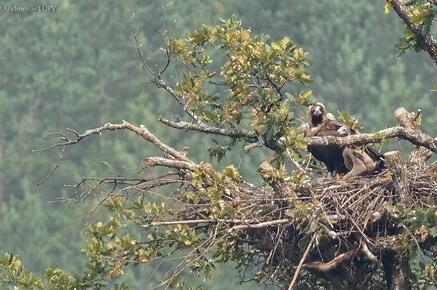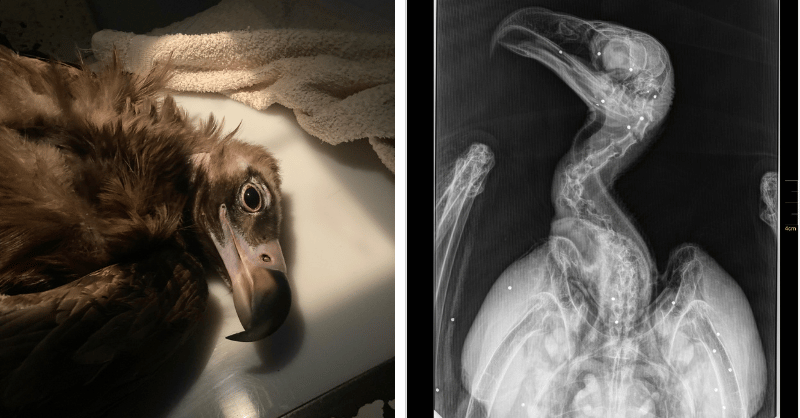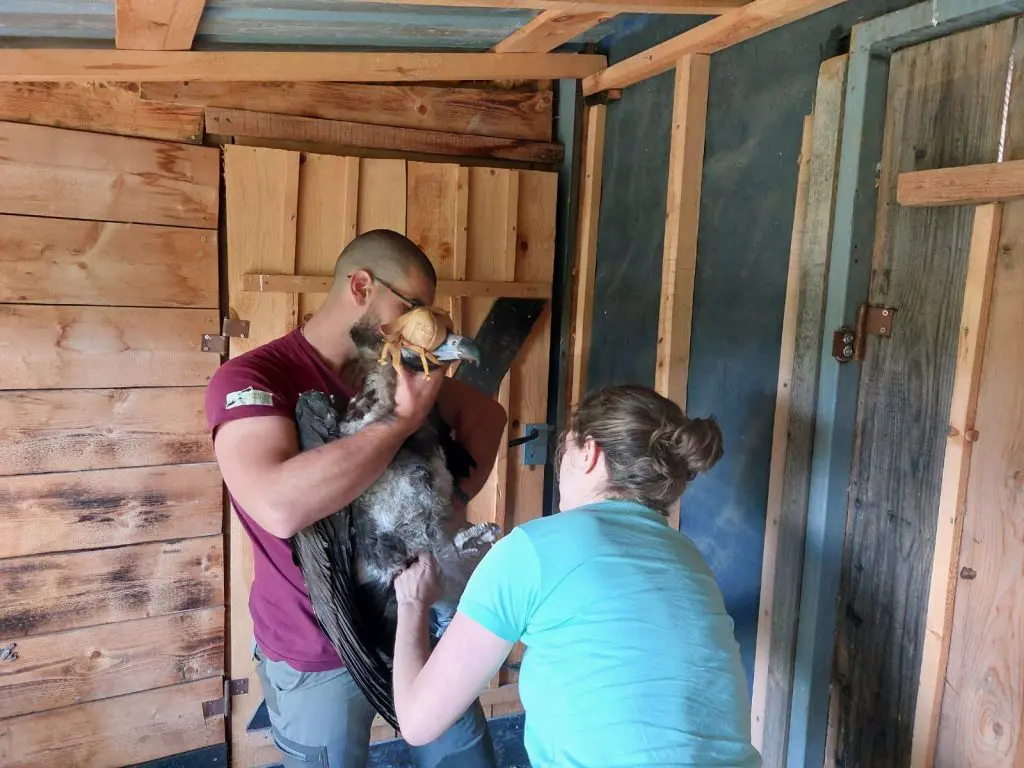
We last caught up with Bulgaria’s latest vulture residents, cinereous vultures Riga, Boyan and Ostrava, a few weeks ago. Since fledging we saw them gaining confidence in their flights abilities and staying close to the release site. So, what have these three birds been up to recently?
Riga’s journey

Of the three birds, Boyan was initially the more adventurous, taking longer flights and exploring the release site, however, Riga is the first to leave the release area and head out on an adventure. Riga started this exploration by following Griffon vultures to a feeding site in the Sinite Kamani area and over the town of Sliven (some 25 km from the release site) but returned back. A few days later Riga headed out on another flight but this time it turned out to be much longer. It headed south west from the Kotel mountains, all the way into Serbia, and then south to Macedonia, finally roosting for the night at a site near the border of Serbia. After spending the night at this site Riga continued south along the Vardar river and made it to a Griffon colony at the Chatino Cliffs where it roosted for the evening. It may be that Riga was following some griffon vultures.

This colony is relatively new, having only been found in 2017 and is close to the Vitachevo supplementary feeding site which is maintained by the Nature Conservation Association Aquila from the local town of Kavadartsi. Following the local Griffon vultures and visiting the Vitachevo feeding station will be a fantastic result for the vulture conservation team leading the reintroduction of cinereous vultures in Bulgaria as it reduces the likelihood of encountering poisoned baits. But Riga’s journey didn’t end here, the same afternoon it crossed the border with Greece and spent the night near Thessaloniki and the next morning continue flying further south.
Riga made it down to the south west corner of continental Greece home to the last two colonies of the Griffon vultures in Mainland Greece, which will help in the search for food and roosting sites.

Vultures do not know about borders, they can cross several political borders in a day, Riga is clearly showing this. This means that vulture conservation needs transborder approach and collaboration between different parties and countries. This is indeed the main reason for launching the regional Balkan Anti-Poisoning Project (BAPP).
Vigilance against poisoning

One of the main threats that caused the extinction of cinereous vultures in Bulgaria and much of the Balkan Peninsula still exists today, illegal wildlife poisoning. Through our Balkan Anti-Poisoning Project we are working with partners in five Balkan states including Macedonia and Greece to tackle this problem and support government and wildlife conservation organisations to put an end to this practice. As the vultures explore the Balkan Peninsula and travel across borders we call on all organisations, including all relevant governmental institutions, to help us be vigilant against this illegal use of poison and to protect these birds and other Balkan vultures.

While Riga is off exploring the Balkans their nest mates, Boyan and Ostrava, are still in the Kotel mountains trying out different roosting sites. Boyan continues to explore the area doing small flights of between 25km and 30km to and from the release site. Ostrava continues to stay close to the release site and is the most frequent visitor to the feeding station, visiting sometimes twice a day, gaining fat reserves, despite the large congregations of Griffon vultures that dominate the site.
We will continue to keep you updated on the progress of these birds over the coming weeks and months.
Vultures Back to LIFE
Led by the wildlife conservation charity Green Balkans, with activities also implemented by the Fund for Wild Flora and Fauna, and bringing together partners from Bulgaria, Spain and Germany, Vultures Back to LIFE aims to reintroduce the cinereous or Eurasian black vulture to Bulgaria. The team will transfer and release around 60 birds, some from captive-breeding, but mostly coming from wildlife rehabilitation centers in Extremadura (Spain) into the wild in Bulgaria as well as creating supplementary feeding stations and improving populations of wild herbivores, improving the nesting conditions and creating artificial nest sites and tackling some of the major threats to vultures in the country such as insulating electricity pylons and illegal use of poison in the nature.






